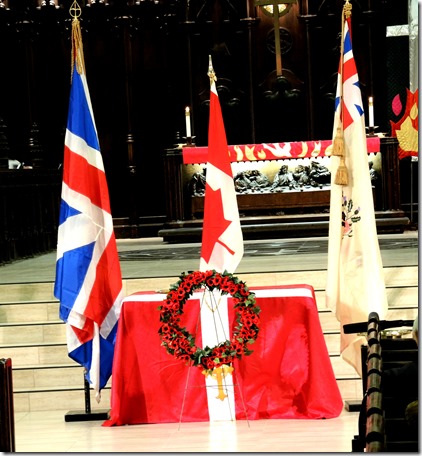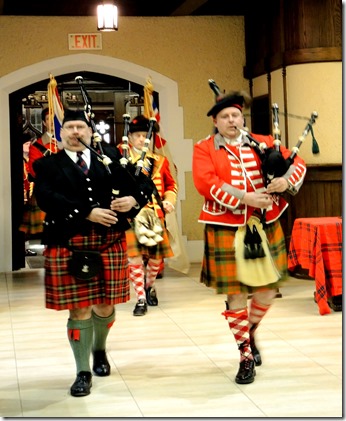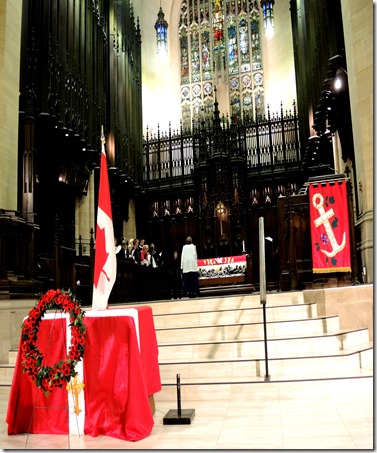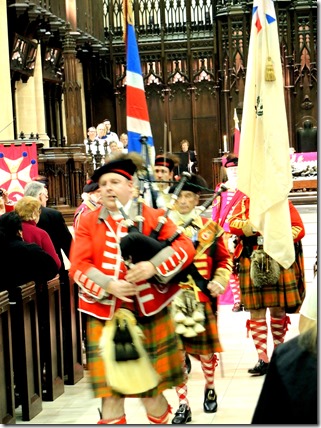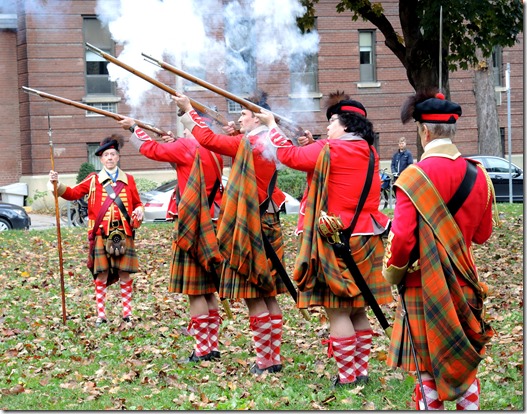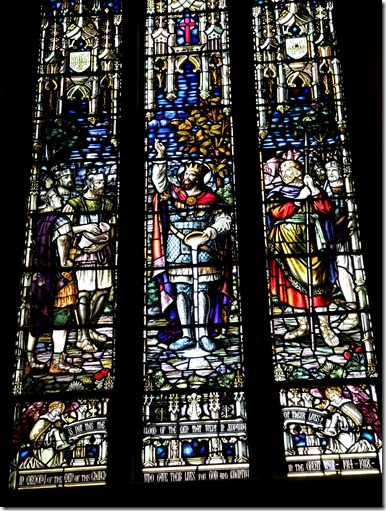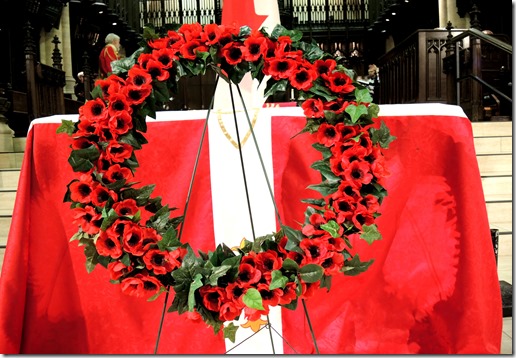The year 2014 has special significance for Canadians as two of our soldiers were recently brutally murdered on home soil. Although the idea of sacrifice is ancient and deeply engrained into our cultural conscience, the deaths of the two soldiers poignantly brings it forward into our modern world, creating a renewed commitment to the concept. “They shall not have died in vain.”
On the Sunday prior to November 11th, I attended a Remembrance Service at Metropolitan United Church, located at Church and Queen Street East. It was deeply emotional, evoking memories of past services, when I was a child. I attended my first Remembrance Day Service 1946, the war having ended only the previous year. Almost every family in our neighbourhood had suffered the loss of a loved one, a friend or a neighbour. The names of the men and woman who had lost their lives in the Second World War remained open wounds that the passage of time had not yet healed.
I was in grade two at D. B. Hood School in 1946. The school was located near Dufferin Street and Eglinton Avenue West in the Fairbank Community, then a suburb of Toronto. The school had no auditorium or gymnasium, so we assembled in the basement of the school, a space usually reserved for the children who brought their lunch to school. In that decade, we were not allowed to do this unless one of our parents signed a note to give to the teacher. For the Remembrance Day Service, we sat on long wooden benches, gazing at a podium that had been created for the occasion. The principal, a local minister and several teachers officiated at the service. It was an experience I never forgot.
In the 1940s, the educational system was vastly different to that of today. Student in grade eight were sometimes 16 years old, as no one was promoted unless that they achieved a passing grade in all academic subjects. They passively sat in classrooms and waited for their 16th birthday so their parents could sign them out of school and they were able to enter the work force. Many of these students, when they turned 18, joined the military. As well, many of the teachers on the staff of the school had enlisted.
Thus, during the first Remembrance Day service I attended in 1946, tears streamed down the cheeks of many of our teachers when the names of those who had died in the war were solemnly read from the Honour Roll. Teachers recalled former colleagues and remembered students who had recently sat in their classrooms. Two young girls sitting behind me cried softly. They had lost their father and an older brother in the conflict. No more would their brother’s voice ring in the frosty air in nearby Fairbank Park as he whooped and hollered while sledding down a snowy slope on a winter’s day. No more would his laughter be heard as he teased the girls while waiting in line to purchase a ticket to one of the local theatres—the Grant or Colony. Though not forgotten, their brother had departed their young lives, his sacrifice a present-day reality.
There are other memories of the soldiers who served that remain with me today. In the late 1940s, I remember standing on Dufferin Street with my father and brother to watch the Warriors’ Day Parade enter the gates of the CNE. The long lines of men, six or eight abreast, seemed endless. Their medals shone in the late-summer sun. The men were young, having returned from the battlefields only a few years earlier. Some marched with a pronounced limp, some were missing an arm and others bore wounds—emotional and physical—hidden from view. However, their faces were youthful and expressed the hope that the years ahead would be peaceful and that they would never again be required to return to the killing fields of battle. Their hope was that the world would learn from the past and that the horrors of conflict would never again descend upon humanity.
Times have indeed passed since 1946. On the morning of November 9, 2014 at Metropolitan United, only one veteran remained in the congregation to represent those who perished in the Second World War. It was with grateful heart that I attended the Remembrance Service, which was tinged with sadness, loss, but also gratefulness. Amid the wreaths, the poppies and the music of remembrance was the hope that the future will be better and that the ideals that the men and woman fought for will survive and flourish in the years ahead.
Entrance of the 78th Fraser Highlanders (York) to commence the Remembrance Service at Metropolitan United on November 9, 2014.
The chancel of Metropolitan United Church.
Departure of the 78th Fraser Highlanders.
Following the service, two volleys were fired in honour of the two soldiers who recently perished.
The memorial window in Metropolitan United that commemorates and honours those from the congregation who gave their lives in the two great wars.
“In Flanders Fields the poppies blow . . . . .”
To view the Home Page for this blog: https://tayloronhistory.com/
To view links to other posts placed on this blog about the history of Toronto and its buildings:
https://tayloronhistory.com/2013/10/08/links-to-historic-architecture-of-torontotayloronhistory-com/
To view previous blogs about old movie houses of Toronto—historic and modern
https://tayloronhistory.com/2013/10/09/links-to-toronto-old-movie-housestayloronhistory-com/
